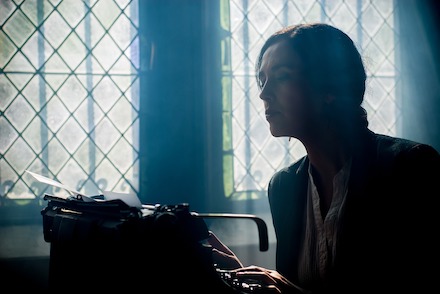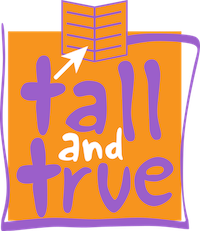I recently wrote a book review of Dyschronia by Jennifer Mills for Writing NSW (formerly the NSW Writers’ Centre). It’s a rewarding read, a “journey of time and perception – of hopes and disappointments”. However, the novel’s time shifts can be challenging for the reader – and review writer!
An additional challenge was that the book came with a media release from the publisher, which included a synopsis of the scene-setting opening chapters. How was I to write my review without plagiarising the media release?
First Draft
My solution was to follow Dyschronia‘s example and shift the start of the review to a different point in time:
Sam is a young, school-age girl living with a single mother, Ivy, in the run-down coastal town of Clapstone when she suffers her first migraine. Through blinding pain and nausea, Sam has a vision. […]
Ivy is sceptical of her daughter’s migraine-primed prescience. Even when Sam’s first “dream” plays out as predicted, her mother dismisses the coincidence. “It’s just the brain playing tricks.” […]
The migraines continue, and Sam’s visions are increasing vivid. Ivy seeks medical help. There are further tests and second opinions. […]
Then one day, Sam sees an email sent to her mother containing a PDF attachment with an intriguing title, Dyschronia. Sam opens the attachment and reads the subheading, “Idiopathic perception disorders and temporal dissociation of childhood”. […]
Jennifer Mills begins her novel in present-day Clapstone. Sam is twenty-five-years-old. The town views her as an oracle and depends upon her visions to bankroll its redevelopment. And yet, a great catastrophe has occurred, far worse than any in the past. […]
I was happy with the opening and finished the book review. Shortly after I submitted it, an email arrived from the Writing NSW editor.
I’ve just looked at your Dyschronia review! It is very good and very well-written, so there aren’t really many edits. The problem though is the structure of the review – the first few paragraphs which explain the background of Sam feel unconnected to the rest of the review, especially as the middle paragraph states “Jennifer Mills BEGINS her novel…”, therefore it feels like that’s where the review should be commencing. Perhaps you could add a little something to clarify what the first section is, or where it falls in the novel. That might make it easier to understand. Otherwise, great job – this is making me want to read the book myself!
Second Draft
The editor’s feedback was positive. Words like “good”, “well-written”, and “great job” are manna to a writer. It feeds our sense of worth in our work. And an editor wanting to read a book based on your review is the icing on the manna!
But her comments about the “unconnected structure” of the opening paragraphs had me rushing back to my review. And she was right. While the narrative in Dyschronia could be non-linear, the book review could not. It was too confusing.
And so I re-worked the opening:
Jennifer Mills sets her novel, Dyschronia, in the run-down coastal town of Clapstone. Sam is twenty-five-years-old. The townsfolk view Sam as their oracle and depend upon her visions to bankroll their survival. And yet, a great catastrophe has occurred, far worse than any in the past. […]
The novel then shifts swiftly back in time. Sam is a school-age girl living with her hard-working single mother, Ivy when she suffers her first migraine. Through blinding pain and nausea, Sam has a vision. […]
Ivy is sceptical of her daughter’s migraine-primed prescience. Even when Sam’s first “dream” plays out as predicted, her mother dismisses the coincidence. “It’s just the brain playing tricks.” […]
Sam’s migraines continue, and her visions are increasing vivid. Ivy seeks medical help. There are further tests and second opinions. […]
Then one day, Sam sees an email sent to her mother containing a PDF attachment with the intriguing title, “Dyschronia”. Sam opens the attachment and reads the subheading – “Idiopathic perception disorders and temporal dissociation of childhood”. […]
Revisiting my writing also allowed me to take on board the few edits suggested by the editor. And to reword parts that, on re-reading a week after I’d submitted the initial review, now sounded clunky.
And when I resubmitted the new draft, both the editor and the writer were happier with the final review – you might like to read it on Writing NSW.
Magic Touch
It’s little wonder many writers thank their editors in forewords, dedications and acknowledgements.
As I’ve found writing book reviews for Writing NSW, editors have a magic touch when reviewing a writer’s work and suggesting edits. Whether there “aren’t many edits” or there are “structural” problems with the writing!
Do you have a magical editor to help with your writing?
© 2018 Robert Fairhead
The review of Dyschronia is published on Writing NSW, on this blog site and on the Tall And True writers’ website.

About RobertFairhead.com
Welcome to the blog posts and selected writing of Robert Fairhead. A writer and editor at the Tall And True writers' website, Robert also writes and narrates episodes for the Tall And True Short Reads podcast. In addition, his book reviews and other writing have appeared in print and online media, and he's published several collections of short stories. Please see Robert's profile for further details.













0 Comments